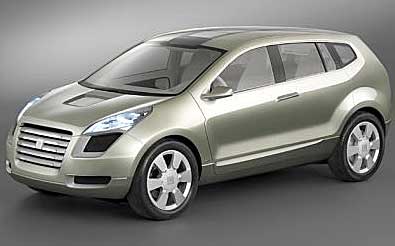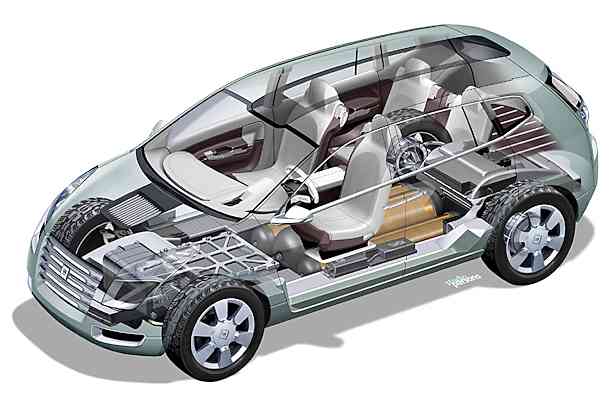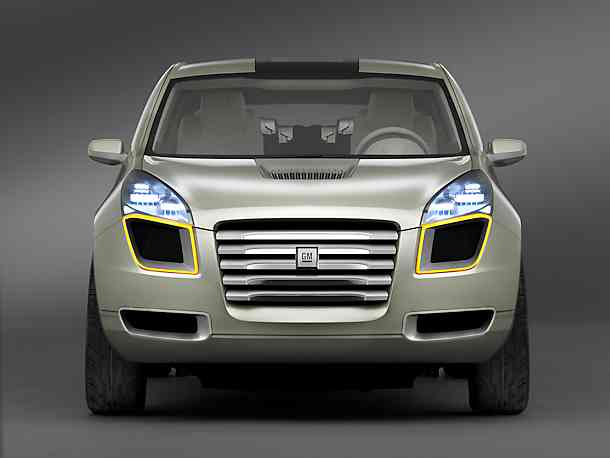The GM Sequel Concept Vehicle is General Motor’s latest attempt to bringing a hydrogen fuel cell car closer to reality. The hydrogen vehicle is being called ‘Sequel’ because it’s the “sequel to the first 100 years of the automobile,” said Rick Wagoner, GM chairman and CEO.
 GM Sequel Concept Vehicle |
Like the AUTOnomy, Hy-wire and GM HydroGen3 fuel cell vehicles before it, the Sequel one-ups the other three and boasts a longer range (300 miles per tank) and 0 – 60 mph acceleration in just under 10 seconds. The Sequel hydrogen vehicle is also based upon a “skateboard chassis,” which means that hydrogen storage tanks, drive bi-wire technology, batteries and electric motors are all sandwiched in-between an 11-inch chassis that protects these important components top-to-bottom.
According to Larry Burns, GM vice president of research and development and planning, Sequel embodies GM’s vision of reinventing the automobile with a fusion of technologies that includes advanced materials, electronic controls, computer software and advanced propulsion. It’s an exclamation point for GM’s comprehensive global advanced technology strategy that is addressing efficiency and emissions, from today’s engine and transmission technology to hybrids and, eventually, fuel cells as the ultimate answer.

GM plans to have a commercially viable hydrogen car in production by 2010. This is a lofty goal for a company that has yet to bring a full hybrid vehicle to market (they currently have a couple of light hybrids). Nonetheless, the Sequel adds excitement to the equation because it is based on current technology and not technology that still needs to be developed.
The Sequel’s carbon composite hydrogen storage tank was developed in conjunction with Quantum Technologies of Irvine, California. This new breed of tank is lightweight, yet stores hydrogen at 10,000 psi instead of the normal 5,000 psi for most fuel cell vehicles, which is also how the Sequel achieves its 300-mile per tank range.
GM’s Advanced Technology Center in Torrance, California developed much of the drive system including the two rear wheel hub motors and the power inverter module for the front electric motor. Other areas in which the Sequel excels over previous models include better control on snow, ice and uneven terrain and shorter braking distances.
The Sequel is about the size of the Cadillac SRX and uses lithium-ion batteries to provide extra power to the three electric motors. The Sequel also uses some of the same technology as current hybrid cars such as regenerative braking.

It will be interesting to see if GM makes their 2010 deadline. Other automakers such as Honda may provide the necessary competitive push in order to make this happen. No matter what, for GM car lovers, hydrogen technology is becoming more real by the month, and when prices come down a bit, General Motors may just have what their loyal following is needing in H2 automotive technology.